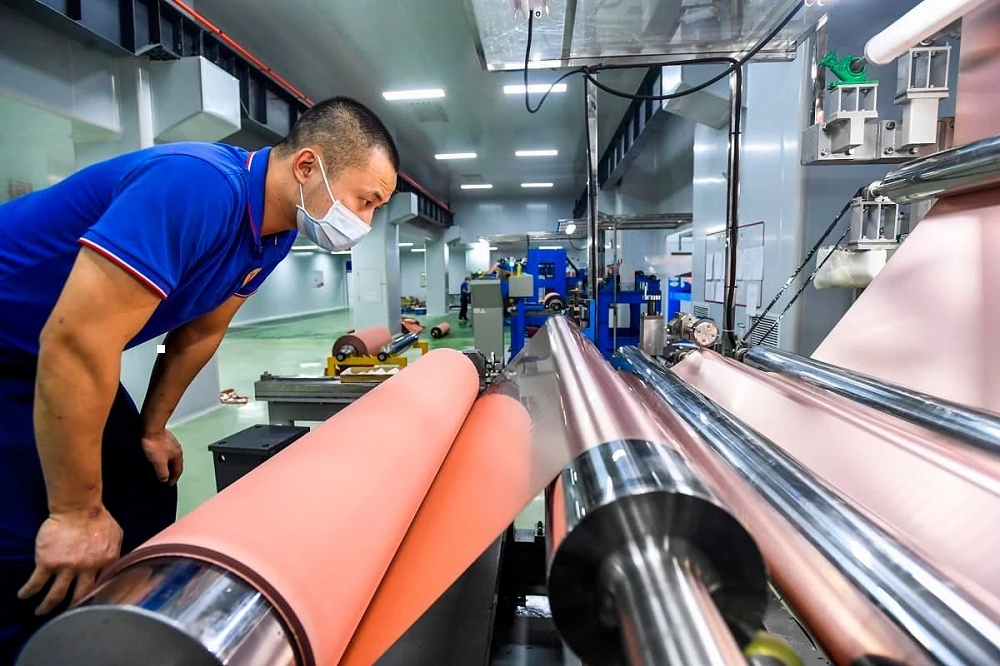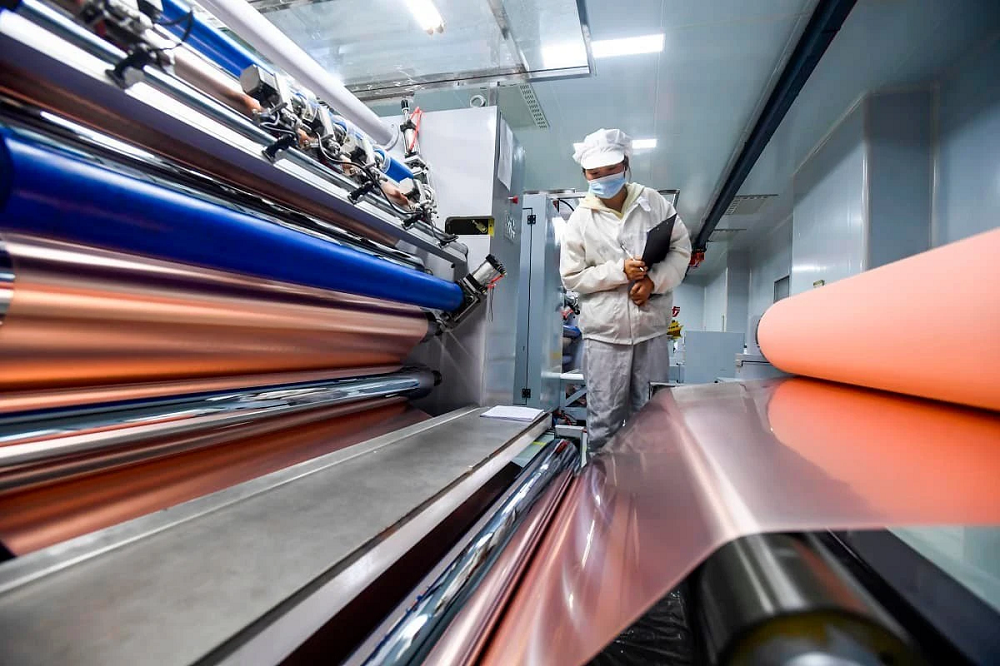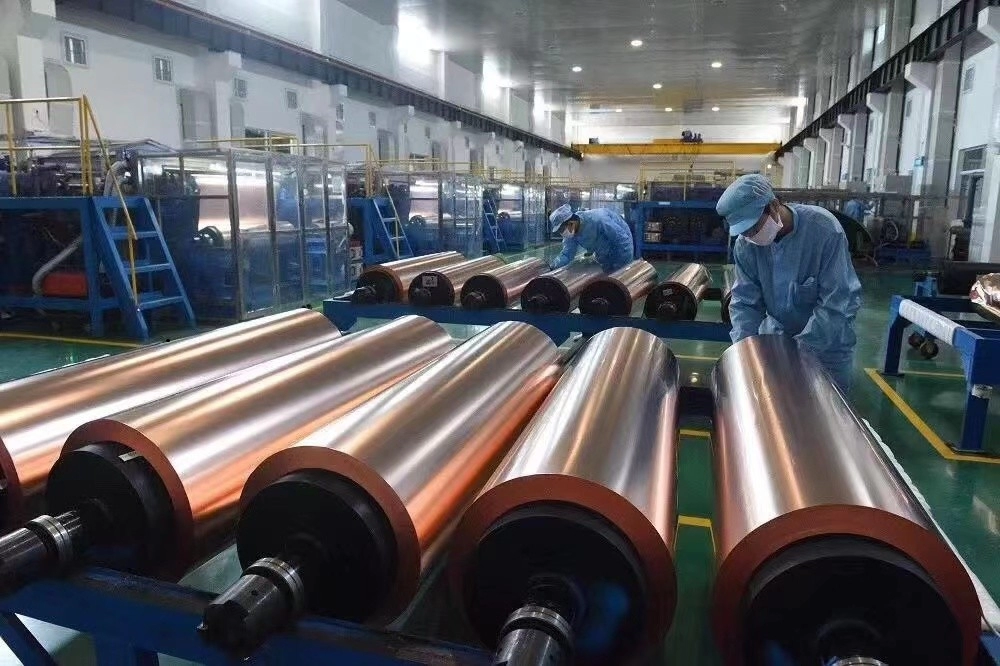Copper foil, this seemingly simple ultra-thin sheet of copper, has a highly delicate and complex manufacturing process. This process mainly includes the extraction and refining of copper, the manufacturing of copper foil, and post-processing steps.
The first step is the extraction and refining of copper. According to data from the United States Geological Survey (USGS), the global production of copper ore reached 20 million tons in 2021 (USGS, 2021). After the extraction of copper ore, through steps like crushing, grinding, and flotation, copper concentrate with about 30% copper content can be obtained. These copper concentrates then undergo a refining process, including smelting, converter refining, and electrolysis, ultimately yielding electrolytic copper with a purity as high as 99.99%.

Next comes the manufacturing process of copper foil, which can be divided into two types depending on the manufacturing method: electrolytic copper foil and rolled copper foil.
Electrolytic copper foil is made through an electrolytic process. In an electrolytic cell, the copper anode gradually dissolves under the action of the electrolyte, and the copper ions, driven by the current, move towards the cathode and form copper deposits on the cathode surface. The thickness of electrolytic copper foil usually ranges from 5 to 200 micrometers, which can be precisely controlled according to the needs of printed circuit board (PCB) technology (Yu, 1988).
Rolled copper foil, on the other hand, is made mechanically. Starting from a copper sheet several millimeters thick, it is gradually thinned by rolling, eventually producing copper foil with a thickness at the micrometer level (Coombs Jr., 2007). This type of copper foil has a smoother surface than electrolytic copper foil, but its manufacturing process consumes more energy.
After the copper foil is manufactured, it usually needs to undergo post-processing, including annealing, surface treatment, etc., to improve its performance. For instance, annealing can enhance the ductility and toughness of copper foil, while surface treatment (such as oxidation or coating) can enhance the corrosion resistance and adhesion of copper foil.

In summary, although the production and manufacturing process of copper foil is complex, the product output has a profound impact on our modern life. This is a manifestation of technological progress, transforming natural resources into high-tech products through precise manufacturing techniques.
However, the process of manufacturing copper foil also brings some challenges, including energy consumption, environmental impact, etc. According to a report, the production of 1 ton of copper requires about 220GJ of energy, and generates 2.2 tons of carbon dioxide emissions (Northey et al., 2014). Therefore, we need to find more efficient and environmentally friendly ways to produce copper foil.
One possible solution is to use recycled copper to produce copper foil. It is reported that the energy consumption of producing recycled copper is only 20% of that of primary copper, and it reduces the exploitation of copper ore resources (UNEP, 2011). In addition, with the advancement of technology, we may develop more efficient and energy-saving copper foil manufacturing techniques, further reducing their environmental impact.

In conclusion, the production and manufacturing process of copper foil is a technological field full of challenges and opportunities. Although we have made significant progress, there is still much work to be done to ensure that copper foil can meet our daily needs while protecting our environment.
Post time: Jul-08-2023
